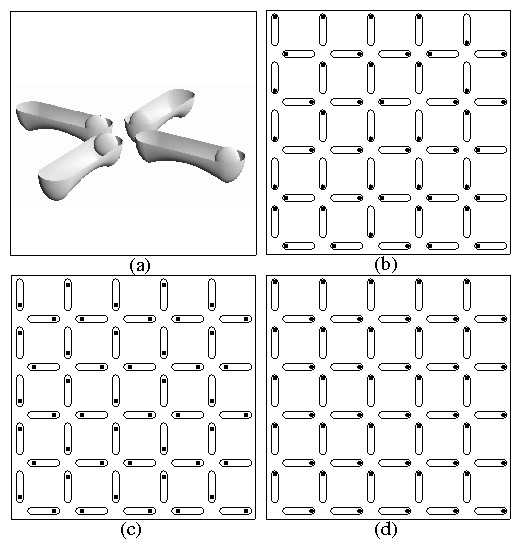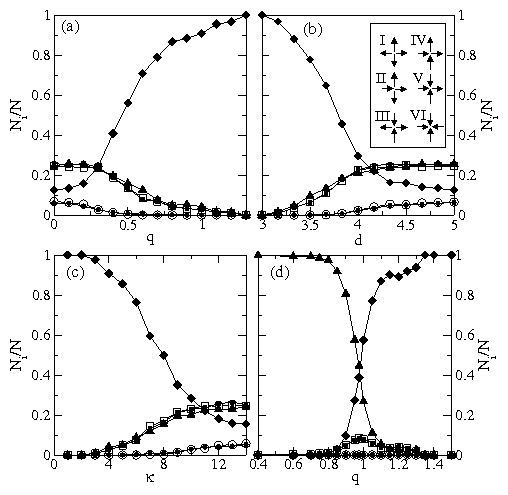
| (1) |

 : NII/N; : NII/N;
 : NIII/N; : NIII/N;
 : NIV/N; : NIV/N;
 : NV/N;
•: NVI/N.
(a) Ni/N vs q at d=3 and κ = 4.0.
(b)
Ni/N vs d at q=1.3 and κ = 4.0.
Inset: schematic spin representation of the 6 vertex types.
(c) Ni/N vs κ at d=3 and q=1.0.
(d) Ni/N vs q for a biased system at d=3, κ = 4.0,
and Fdc=0.02. : NV/N;
•: NVI/N.
(a) Ni/N vs q at d=3 and κ = 4.0.
(b)
Ni/N vs d at q=1.3 and κ = 4.0.
Inset: schematic spin representation of the 6 vertex types.
(c) Ni/N vs κ at d=3 and q=1.0.
(d) Ni/N vs q for a biased system at d=3, κ = 4.0,
and Fdc=0.02.
|

|